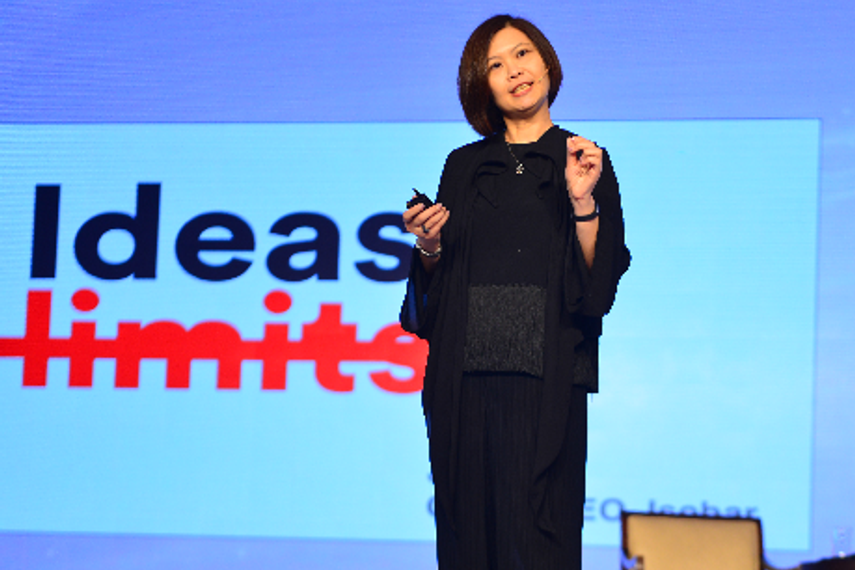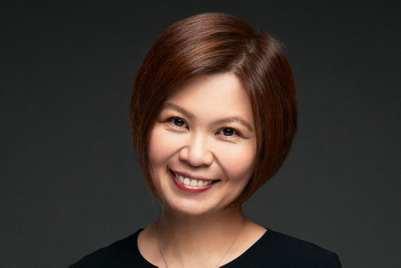
Speaking at the Knowledge Seminar on 9 April, the third and final day of Goafest 2016, the global CEO of Isobar, Jean Lin, discussed the ideology behind 'Ideas without limits'.
She called the present period of advertising as the renaissance because of the availability of technology. But she also urged agencies to look towards creativity, 'the key to making anything successful'.
She said, "In the digital age it's about delivering ideas without limit. The importance of innovation. The key point behind innovation is that the idea actually exists, we have to just innovate. According to a PWC research in 2013, companies that look to innovate grow faster by 60 per cent, compared to the 20 per cent growth of companies that are taking on each other."
Changing landscape
Lin spoke about how the landscape has changed in the last year and a half with a few examples.
She said, "Alibaba.com launched a 'Singles Day' sale on 11 November 2015. Sales worth 14.3 billion (US) dollars were made on the day. 69 per cent of this was from mobiles. Shoppers from 200 countries participated and 16,000 international brands were bought. This is in sync with what AC Nielsen terms 'Borderless Buyers'. People from all over the globe can buy online. India is one of the highest borderless buyers worldwide. Now clients don't have to look at other brands within their geography, they need to compete with prices even in other countries."
Lin cited the example of Disneyland's 1 billion dollar investment in the magical wrist band.
She explained, "People hated waiting in lines for rides at Disneyland. The wrist band worked as the fast track ticket, hotel room key and also helped people get reservations in hotels. A four-year-old could have all this on his or her wrist. Now, children will want that connected experience."
The next thing she touched upon was programmatic videos. "Even for programmatic video, content is required. It will take different thinking though. Unilever used this in Brazil, where they showed 1,00,000 different videos for different people for a deodorant brand. It gave viewers higher satisfaction. Technology helps, but it takes a creative to think of creativity in a different way," she said.
YouTube Shoppable videos and Pinterest predicted-shopping were discussed next. She explained, "Ninety per cent of people on Pinterest are there to buy things. As people browsed images, Pinterest showed users the closest item that could be bought in comparison to the picture."
She then spoke about Mastercard's innovation of paying by selfies online, and how that was more than just a security verification tool.
She said, "It uses technology to bring points of inspiration and points of transaction even closer, delivering seamless, delightful brand experiences at any point of the user journey. You must look to bring points of inspiration and points of transaction even closer together."
The CEO of Isobar explored two types of ideas that will come up and create more substantial value.
Ideas that reimagine the last mile
With examples, Lin said, "The idea must not only be an ad campaign."
Fiat Live Store
The next example was from Coca Cola in China. She said, "It's not brand plus commerce anymore. It's brand * commerce. This made the 'Share a Coke' campaign far (more) dramatic."
Ideas that invent and reinvent
"Innovation comes from some idea that already exists," she said.
She used examples from Isobar to make her point:
Sky TV - Sky Tip
GM - Co-driver
She surmised with the new role of agencies and an example. She said, "We (agencies) make the assumption that we are creatively solving problems. You have to solve problems. Anyone can think of an idea, but very few can execute that idea. That's a key to win. We need to grow with clients. This will come when tangible results are seen. When you think of ideas without limit, it can happen."









.jpg&h=268&w=401&q=100&v=20250320&c=1)
